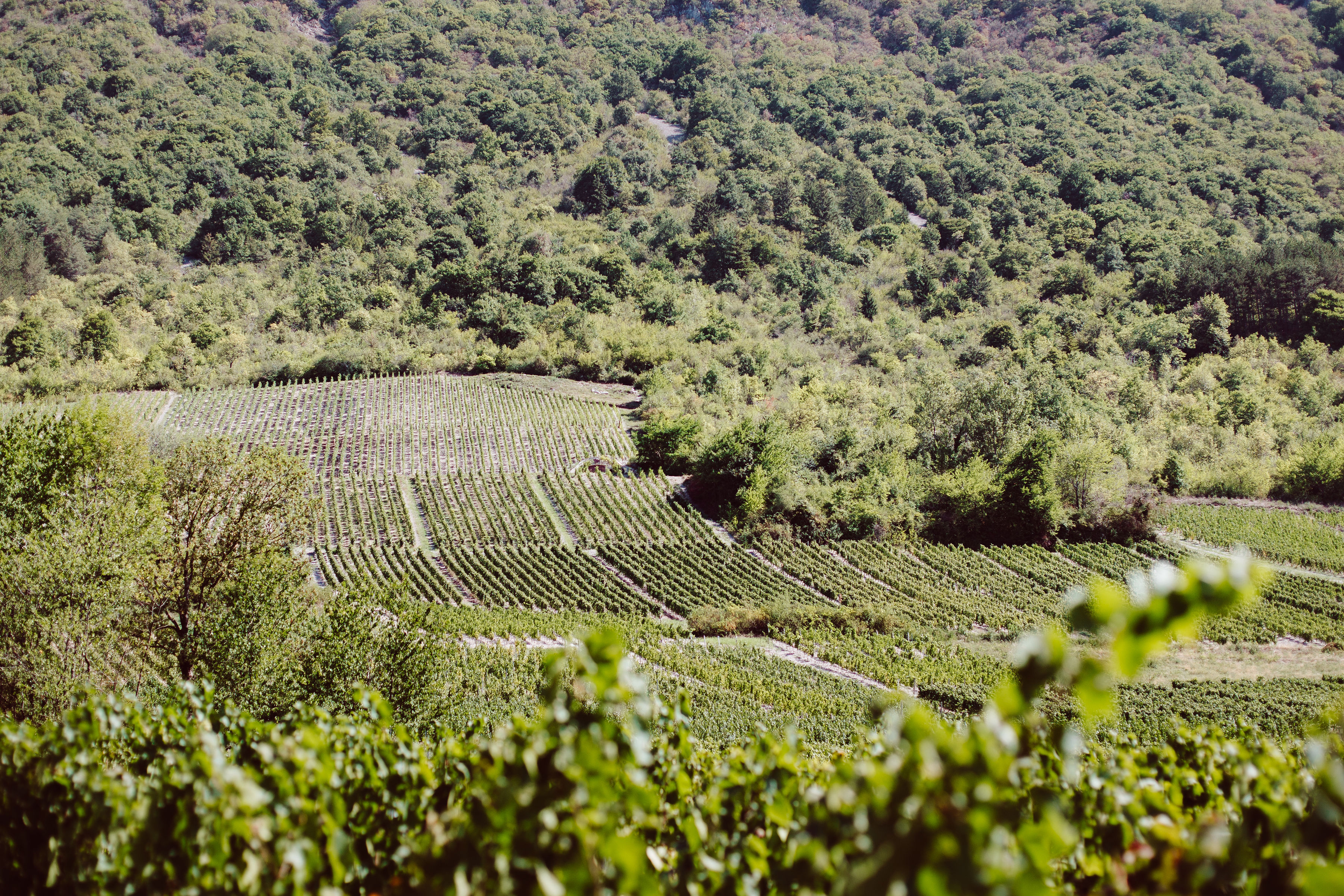Languedoc Pic Saint-Loup PDO
Pic-Saint-Loup, one of the nuggets of the Languedoc
It is in a land of legends and traditions that the Pic-Saint-Loup appellation flourishes. At the foot of the mountain that gave it its name, this wine became a full-fledged AOC in 2017, after having long been classified as "coteaux du Languedoc". This recognition is due to the work and passion of dynamic winegrowers who have managed to exploit a unique terroir to make Pic-Saint-Loup a great wine. The reds of the appellation have thus carried the colours of the Languedoc high; the rosés are also worth discovering.
General presentation of the appellation
The Pic-Saint-Loup appellation is the northernmost of the Languedoc vineyards. In a landscape of garrigue and pine forest dominated by the slender, rocky peak of the Pic Saint-Loup, the vines cover about 1,200 hectares. Some twenty communes in the Hérault and Gard departments are included in the appellation area. North of Montpellier, between the Mediterranean and the Cévennes, the Pic Saint Loup vineyards benefit from a favourable climate and varied soils, which give rise to a wide range of wines available in red and rosé.
If the black Grenache carries the identity of the Languedoc vineyard, it is the Syrah that reigns here. This grape variety has indeed found its favourite territory, between Pic Saint-Loup and the Hortus mountain. In the blends, Syrah must be present in at least 50% for the reds and 30% for the rosés. It is complemented by Grenache and Mourvèdre, and even by other grape varieties such as Carignan, Cinsault, Counoise and Morrastel.
The geographical name pic-saint-loup is recent. It was part of the coteaux-du-languedoc appellation, itself renamed simply Languedoc in 2007. The Languedoc-Roussillon vineyards are indeed seeking to rationalise their offer. From now on, the Languedoc has 5 Crus which form the top of the range of production and of which Pic-Saint-Loup is a part, alongside Corbières-Boutenac, La Clape, Minervois-La Livinière and Terrasses du Larzac.
Characteristics of Pic-Saint-Loup
The Pic-Saint-Loup AOC wine is characterised by its greediness. These are red wines that are full of relief and sunshine, like the landscape in which they are produced. Their dark colour reveals an intense bouquet of black fruits such as blueberries and blackcurrants, enriched by hints of spices, liquorice and violets. Notes of red fruit, garrigue, vanilla or roasting can complete the tasting. Finally, it is a wine for laying down; its ageing potential can exceed 10 years.
They represent a small part of the production, but the rosé wines of the Pic-Saint-Loup appellation are also worth a visit. They offer a very attractive soft pink colour and a fruity and balanced palate dominated by raspberry, redcurrant and strawberry. Floral, citrus or spicy notes may also appear.
How to taste a Pic-Saint-Loup
The red wines of Pic-Saint-Loup accompany roasted or simply grilled red meats. They also proudly accompany game, such as hare, wild boar or roe deer, cooked roasted or in sauce. A red pic-saint-loup also goes well with poultry dishes, especially duck or duckling. Finally, it will be perfect with cheeses such as Tête de Moine, Brie with truffles, Morbier or Bleu. Best served between 15 and 16°.
The pic-saint-loup rosés are as sunny as the dishes they accompany. Served chilled, they are perfect with stuffed vegetables, ratatouille, charcuterie, grilled meats and brochettes. Enjoy it also with gorgonzola or goat cheese.
Laissez-vous tenter... par les autres appellations !
Le vignoble
